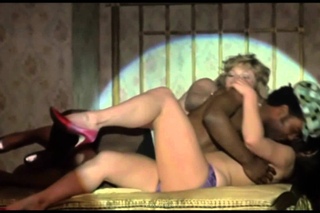Sell & Spin | A History of Advertising
Year 1999 Documentary.
“According to a study published Monday by researchers at Duke University’s Center for Cognitive Neuroscience, humans experience the most intense feelings of happiness when pressing the ’skip ad’ button before watching a video on the internet.“ That comes from The Onion, whose satirical reporting hits the mark as usual. If we know one thing about advertising for sure, we know that we don’t like it — or at least we don’t like many of its current manifestations, so much so that we willingly engage in the arms race of downloading special programs to block them, which advertisers soon find a way to defeat, requiring us to find new evasive tactics, which forces advertises to cut another path to us, and so on.
How has it come to this? You can learn exactly how from Sell & Spin, the 1999 television documentary above. “From ancient phrases etched in stone to today’s cutting-edge multimedia commercials, selling has always meant grabbing attention,“ says its narrator, the respected talk-show host Dick Cavett. “The point? Moving the product. The means? Tapping into desire — creating need.“ From the first known advertisement, a wine shop’s sign from ancient Babylon, to the eve of the high-tech 21st century, Cavett and a host of advertising experts tell the story of not just how advertising became an industry in the first place, but how it became the huge, shape-shifting industry we regard today as both wildly creative yet somehow sinister.
Even the most ad-loathing viewer will recognize many of the iconic examples of this ultra-commercial art form of the thousands this documentary includes: Burma-Shave roadsigns, the smoke-blowing Camel cigarettes billboard in Times Square, the Volkswagen Beetle touting itself as a “lemon“ on a whole magazine page, “I can’t believe I ate the whole thing“; mascots from Tony the Tiger to the Marlboro Man (a symbol of freedom, we hear, for postwar office workers shackled to their desks) to the Taco Bell chihuahua; and of course Coca-Cola’s “I’d like to teach the world to sing,“ whose conception the final episode of Mad Men fictionalized by putting into the mind of its protagonist, 1960s Madison Avenue “creative“ Don Draper.
That acclaimed recent television drama both glamorized and criticized the culture of the 20th-century advertising industry, which may have operated as cynically and opportunistically as the businesses it worked for, but which nevertheless crafted some of the most enduring words and images in our modern culture. But what of the “mad men“ of today, charged with the thankless (if often remunerative) task of coming up with those videos we get such a kick out of clicking past? Sell & Spin shows us the very beginning of their work, taking place on a now-quaint-looking cyberspace that had only just moved beyond Burma Shave-simple banner ads.
“Nobody quite knows how to use it effectively,“ says Jay Chiat of the internet toward the documentary’s end. As the co-founder of Los Angeles’ formidable Chiat/Day advertising industry, he knew the mechanics of the craft well indeed, more than thoroughly enough to recognize both the medium’s potential and the extent to which nobody had yet tapped it. How we all use the internet has changed dramatically since Chiat died in 2002, but his words still ring true. It’s still early days for internet advertising, and its maddest men (and women) — the ones who fully reject the old industry commandment to “irritate your way into peoples’ consciousness — have yet to arrive on the scene.























